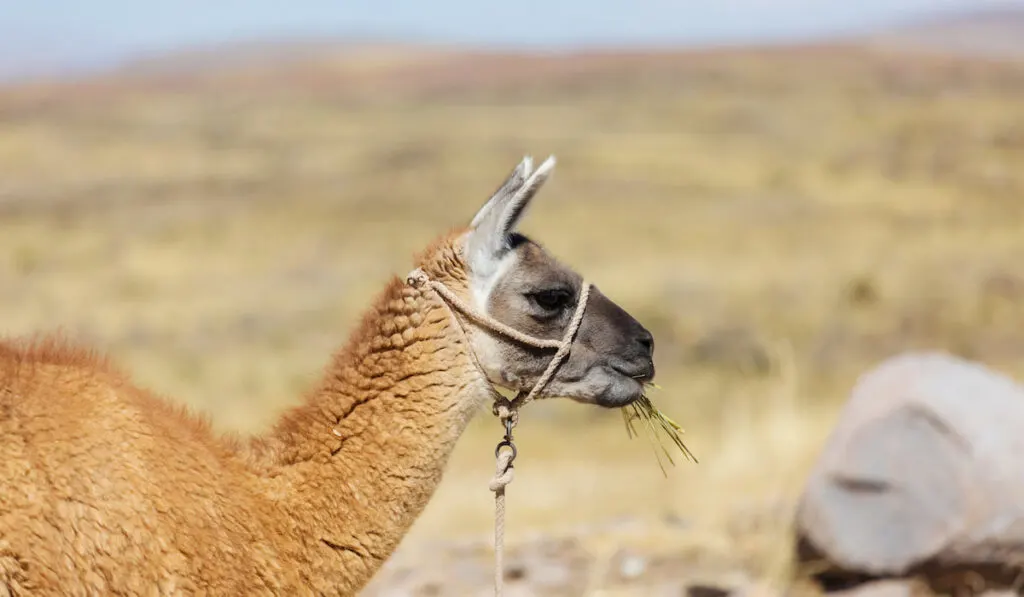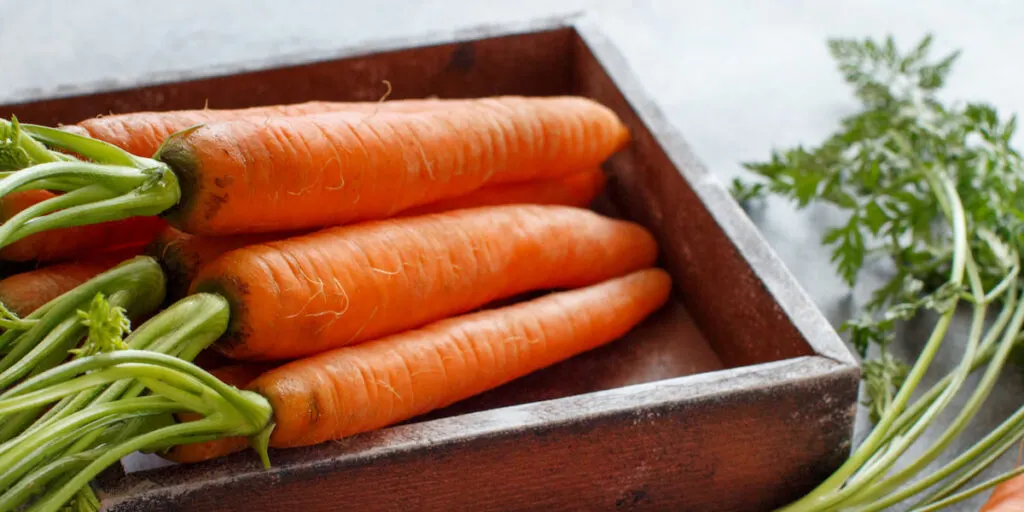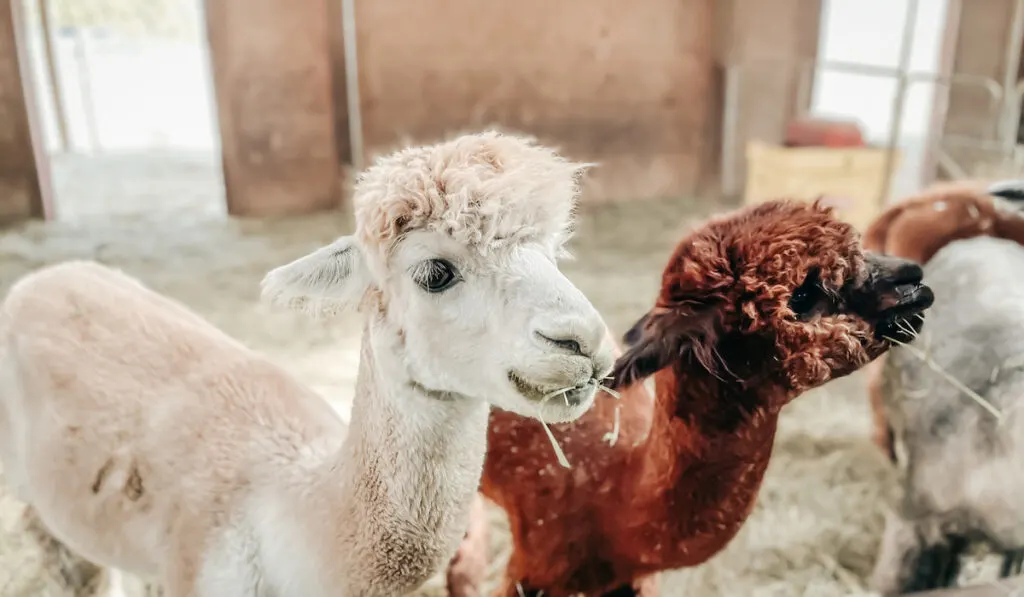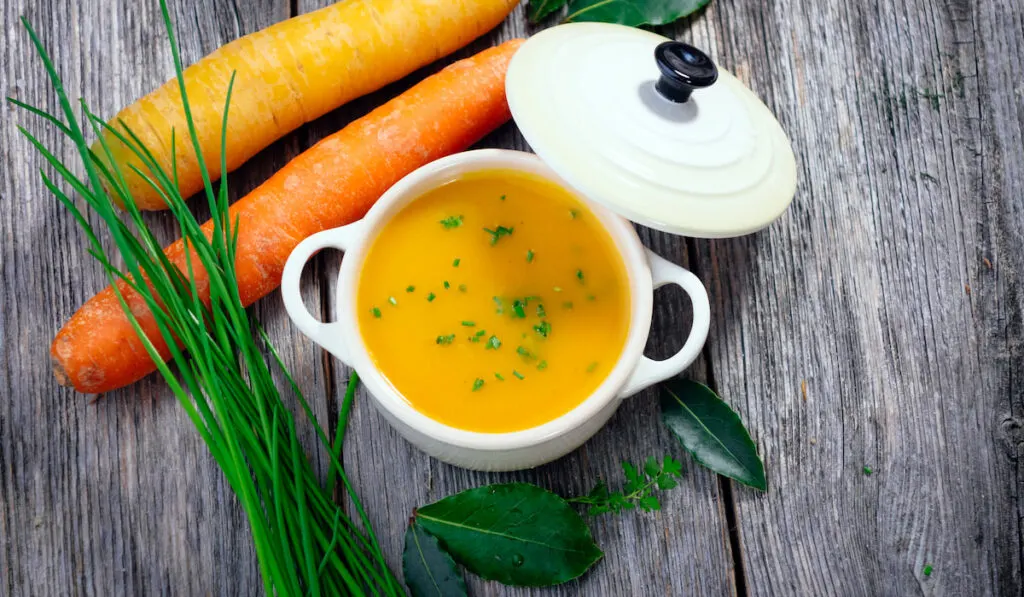The usual ruminant animals have 4 stomachs, but camelids like llamas have 3 stomachs. While a llama’s stomach and the stomach of a ruminant animal are different, their diets are quite similar. Llamas are herbivores like ruminants, so their forage is plant-based, but let’s find out if they eat carrots too.

Can llamas eat carrots?
Llamas can eat carrots. You can give your llamas raw carrots, carrot peels, carrot tops, or cooked carrots. As with any treat, carrots are best fed in moderation.
Besides carrots, llamas also enjoy eating apples, sweet potatoes, and basically the same range of forage as sheep and goats.
While feeding llamas with carrots, care should be taken to ensure they do not choke. Cutting the carrots into bit sizes can help with this.
Apart from what we’ve mentioned so far, there’s more to learn about feeding carrots to llamas. We cover these other details below.
Table of Contents
How Llamas Eat Carrots
You can give your llamas raw carrots, carrot peels, carrot tops, or cooked carrots. But you may want to avoid mixing raw carrots with boiled carrots while feeding them. Llamas are used to eating only one type of food during a meal.
So, if you intend to give them raw carrots, give them only raw carrots. It could be carrot tops, carrot peels, or whole carrots. As long as it is raw, that’s fine.
The same applies to cooked carrots; when you give them cooked carrots, give them only cooked carrots.

Health Benefits
Every 100 grams of carrot gives only about 41 calories. It contains very little carbohydrate, fat, and protein. So while carrot can be used as a treat, it cannot be a mainstay for llamas.
Vitamin A
Carrots contain a whole lot of nutrients. One of these nutrients, vitamin A, is present in carrots as beta carotene. In the body, beta carotene is converted into vitamin A. The vitamin A content in carrots is estimated to be over 300%, making it the most abundant nutrient in carrots.
Vitamin A plays a role in the growth of muscles, fiber, bones, and teeth in llamas. Besides this, vitamin A may also play a part in preventing infections in llamas.
Potassium
For every 100 grams of carrots, your llamas get about 320 mg of potassium. Potassium is the main ion inside llamas cells, and it is essential for most cellular functions.
So, just imagine that the potassium from carrots will keep the cells of your llamas functioning as they should. Then potassium is also essential for muscle function.
Water
Carrots can come in as great treats during heat stress. Heat stress causes loss of water and potassium, and lucky for llamas carrots happen to contain both (100 grams of carrot holds 88% water).
Water also aids the digestion of fiber and the absorption of nutrients in llamas. Seeing that llamas consume a lot of fiber, they can use all the water they get.

Calcium
Carrot contains calcium, and calcium is essential for the development of bones and teeth in llamas. The usefulness of calcium to llamas is dependent on the availability of vitamin D. Without vitamin D, your llamas may not be able to use calcium.
Carrots are not great sources of vitamin D, so get your llamas something with vitamin D if the calcium will ever amount to anything. A good source of phosphorus is also essential to the functions of calcium in the body.
Iron
Iron is also present in trace quantities, and this can help your llamas with blood formation. You’ll also find magnesium in carrots, and they help llama tissues remain healthy.
Magnesium
Magnesium is also useful in the removal of excess nitrogen from the body as ammonia. This is achieved through the formation of urea. This process is particularly useful during heat stress.
Vitamin C & Vitamin B6
Other vitamins present in carrots include vitamin C and vitamin B6. Vitamin C may be beneficial in tissue repair and immune response. On the other hand, vitamin B6 may help improve the nerve functions of the llamas.
Treat Ideas
Carrots in Carrot Soup

To make this, wash some carrots then divide them into three-quarters and one-quarter. Place the three-quarter portion in a blender and puree until it turns very fine and juicy. Pour the puree into a bowl.
Chop the one-quarter portion into very small chunks, and add them to the puree. You may share it into multiple bowls if you have many llamas.
Dangers of Eating Carrots
The main danger that comes with feeding carrots to llamas is choking. This may occur when you feed them large-sized whole carrots or when you overfeed them. This is why it is preferable to cut the carrots into smaller chunks before you feed them.
Fun Fact About Carrots
Here are a few things you probably didn’t know about carrots:
- Carrots are usually orange, but they also come in other colors including, purple, red, yellow, and white. Primal carrots came out in 2 colors: yellow and purple.
- In the past, carrots were commonly used as medicines, not food.
- Carrots used to be mistaken for parsnips. So, no one really knows when they appeared first.
- Carrots can be grown from carrot tops, but they can also be grown from carrot sees. Yes, carrots have seeds. The seeds grow out with the white flowers that come with carrots.
Final Thoughts
Carrots are very nutritious treats to give to your llamas, and they are delicious too. But always ensure the carrots you give to your llamas are free of molds and any other fungal growth. Any such growth will produce mycotoxins, which can be very harmful to llamas.
Resources
- https://howtodoright.com/what-do-llamas-eat/
- http://www.stillwaterminerals.com/analysis.php
- http://ndb.nal.usda.gov/ndb/search/list?qlookup=11124
- https://www.masterfeeds.com/nutrition/15-alpaca-llama-pellet/
- https://www.webmd.com/food-recipes/qa/what-are-the-different-colors-of-carrot
- https://www.healthline.com/nutrition/foods/carrots
- https://www.webmd.com/food-recipes/features/5-healthy-facts-about-carrots
- https://www.foodrepublic.com/2014/11/24/10-things-you-didnt-know-about-carrots/
